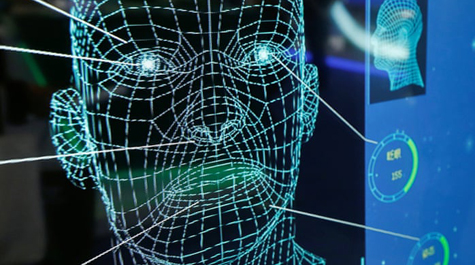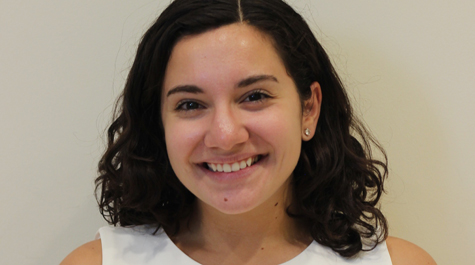Exploring the use of deceptive technology in the U.S. and abroad
Megan Hogan ’21 can make an argument for using deepfake technology as a national defense tactic, but she plans to expose similar methods of disinformation during the 2020 Presidential election.
Her paper, “Replicating Reality – Advantages and Limitations of Weaponized Deepfake Technology,” recently won the 2020 Bobby R. Inman Award as the top undergraduate student paper in the country in the field of intelligence and national security.
In her paper, she describes advances in deceptive manipulation of digital images and argues that the United States should develop weaponized deepfake technology as a capability to deny, defeat or defend against any adversary that seeks to harm U.S. national interests.
Moreover, she is co-directing a research lab called “DisinfoLab,” that is funded by William & Mary’s Global Research Institute. The goal is to make the American public aware of foreign adversaries who are trying to influence our election and our thoughts about the current political climate.
Hogan researched deepfakes as a disinformation tactic for her Project on International Peace and Security (PIPS) white paper last spring, narrowing down her research focus after receiving guidance from PIPS Co-Directors Amy Oakes and Dennis Smith.
In August, she learned she was the recipient of the undergraduate Inman Award, given by The Intelligence Studies Project of the University of Texas at Austin.
“I didn’t anticipate winning because I know the Inman Award is very competitive, and they receive over 100 applications each year from undergrads and Ph.D. students,” said Hogan, who is majoring in international relations and economics.
Hogan explains that deepfakes are a form of synthetic media that use artificial intelligence to produce highly realistic, fake videos. They are extremely effective weapons of disinformation capable of both undermining trust in institutions and elections and inciting political violence. She contends virtually undetectable deepfakes will be a reality by the end of 2020.
Deepfakes have also made their way into popular culture and can be found in television commercials for streaming television service Hulu and internet memes, among other outlets. Actor/director Jordan Peele warned of the dangers of deepfakes in a video he helped produce with the CEO of BuzzFeed. In the video, he used deepfake technology to make former President Barack Obama’s lips move in sync with what Peele was saying.
Hogan argues that the United States should develop the technology to protect itself from any adversary that seeks to harm the country’s interests.
“The only time I believe that the U.S. should ever actively use deepfakes as a weapon would be in a boots on the ground situation,” Hogan said. “For example, if we were engaging in a military campaign and wanted to use deepfakes to achieve specific tactical goals.
“I do not advocate at all for using this against civilians or targeting major political figures.”
Hogan said the United States’ main motivation for developing deepfake technology should be to guard itself against other countries trying to use artificial intelligence.
“I would say deepfake detection is of paramount importance because this tactic of disinformation is completely different from anything we have ever encountered, and people have a visceral reaction to deepfakes,” Hogan said. “It's much more compelling than fake news stories or traditional forms of disinformation. So if the United States even has a hope of being able to detect deepfakes once an attack is launched against our citizens, and I do believe that there will be an attack at some point in the future, we need to start developing it now.”
With the help of Oakes, Hogan plans to spend this semester turning her paper into either an article or OpEd to be published in a foreign policy journal.
She will also co-direct “DisinfoLab” with former PIPS research intern Thomas Plant ’22. Hogan and Plant are in the process of recruiting students to participate in the lab.
“In the wake of the 2020 presidential election, we want to act as an aggressive media literacy campaign across the nation and kind of just keeping everyone's awareness that there are foreign adversaries who are trying to influence our election and our thoughts about the current political climate,” Hogan said.
 Skip to main content
Skip to main content


